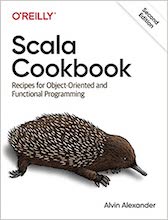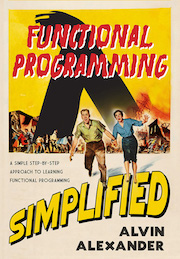|
|
The Pool.java Java example source code
/*
* Copyright (c) 2002, 2011, Oracle and/or its affiliates. All rights reserved.
* DO NOT ALTER OR REMOVE COPYRIGHT NOTICES OR THIS FILE HEADER.
*
* This code is free software; you can redistribute it and/or modify it
* under the terms of the GNU General Public License version 2 only, as
* published by the Free Software Foundation. Oracle designates this
* particular file as subject to the "Classpath" exception as provided
* by Oracle in the LICENSE file that accompanied this code.
*
* This code is distributed in the hope that it will be useful, but WITHOUT
* ANY WARRANTY; without even the implied warranty of MERCHANTABILITY or
* FITNESS FOR A PARTICULAR PURPOSE. See the GNU General Public License
* version 2 for more details (a copy is included in the LICENSE file that
* accompanied this code).
*
* You should have received a copy of the GNU General Public License version
* 2 along with this work; if not, write to the Free Software Foundation,
* Inc., 51 Franklin St, Fifth Floor, Boston, MA 02110-1301 USA.
*
* Please contact Oracle, 500 Oracle Parkway, Redwood Shores, CA 94065 USA
* or visit www.oracle.com if you need additional information or have any
* questions.
*/
package com.sun.jndi.ldap.pool;
import java.util.Map;
import java.util.WeakHashMap;
import java.util.Collection;
import java.util.Collections;
import java.util.Iterator;
import java.util.LinkedList;
import java.io.PrintStream;
import java.lang.ref.Reference;
import java.lang.ref.ReferenceQueue;
import javax.naming.NamingException;
/**
* A map of pool ids to Connections.
* Key is an object that uniquely identifies a PooledConnection request
* (typically information needed to create the connection).
* The definitions of the key's equals() and hashCode() methods are
* vital to its unique identification in a Pool.
*
* Value is a ConnectionsRef, which is a reference to Connections,
* a list of equivalent connections.
*
* Supports methods that
* - retrieves (or creates as necessary) a connection from the pool
* - removes expired connections from the pool
*
* Connections cleanup:
* A WeakHashMap is used for mapping the pool ids and Connections.
* A SoftReference from the value to the key is kept to hold the map
* entry as long as possible. This allows the GC to remove Connections
* from the Pool under situations of VM running out of resources.
* To take an appropriate action of 'closing the connections' before the GC
* reclaims the ConnectionsRef objects, the ConnectionsRef objects are made
* weakly reachable through a list of weak references registered with
* a reference queue.
* Upon an entry gets removed from the WeakHashMap, the ConnectionsRef (value
* in the map) object is weakly reachable. When another sweep of
* clearing the weak references is made by the GC it puts the corresponding
* ConnectionsWeakRef object into the reference queue.
* The reference queue is monitored lazily for reclaimable Connections
* whenever a pooled connection is requested or a call to remove the expired
* connections is made. The monitoring is done regularly when idle connection
* timeout is set as the PoolCleaner removes expired connections periodically.
* As determined by the experiements, cleanup of resources using the
* ReferenceQueue mechanism is reliable and has immidiate effect than the
* finalizer approach.
*
* @author Rosanna Lee
*/
final public class Pool {
static final boolean debug = com.sun.jndi.ldap.LdapPoolManager.debug;
/*
* Used for connections cleanup
*/
private static final ReferenceQueue<ConnectionsRef> queue =
new ReferenceQueue<>();
private static final Collection<Reference weakRefs =
Collections.synchronizedList(new LinkedList<Reference());
final private int maxSize; // max num of identical conn per pool
final private int prefSize; // preferred num of identical conn per pool
final private int initSize; // initial number of identical conn to create
final private Map<Object, ConnectionsRef> map;
public Pool(int initSize, int prefSize, int maxSize) {
map = new WeakHashMap<>();
this.prefSize = prefSize;
this.maxSize = maxSize;
this.initSize = initSize;
}
/**
* Gets a pooled connection for id. The pooled connection might be
* newly created, as governed by the maxSize and prefSize settings.
* If a pooled connection is unavailable and cannot be created due
* to the maxSize constraint, this call blocks until the constraint
* is removed or until 'timeout' ms has elapsed.
*
* @param id identity of the connection to get
* @param timeout the number of milliseconds to wait before giving up
* @param factory the factory to use for creating the connection if
* creation is necessary
* @return a pooled connection
* @throws NamingException the connection could not be created due to
* an error.
*/
public PooledConnection getPooledConnection(Object id, long timeout,
PooledConnectionFactory factory) throws NamingException {
d("get(): ", id);
d("size: ", map.size());
expungeStaleConnections();
Connections conns;
synchronized (map) {
conns = getConnections(id);
if (conns == null) {
d("get(): creating new connections list for ", id);
// No connections for this id so create a new list
conns = new Connections(id, initSize, prefSize, maxSize,
factory);
ConnectionsRef connsRef = new ConnectionsRef(conns);
map.put(id, connsRef);
// Create a weak reference to ConnectionsRef
Reference<ConnectionsRef> weakRef =
new ConnectionsWeakRef(connsRef, queue);
// Keep the weak reference through the element of a linked list
weakRefs.add(weakRef);
}
}
d("get(): size after: ", map.size());
return conns.get(timeout, factory); // get one connection from list
}
private Connections getConnections(Object id) {
ConnectionsRef ref = map.get(id);
return (ref != null) ? ref.getConnections() : null;
}
/**
* Goes through the connections in this Pool and expires ones that
* have been idle before 'threshold'. An expired connection is closed
* and then removed from the pool (removePooledConnection() will eventually
* be called, and the list of pools itself removed if it becomes empty).
*
* @param threshold connections idle before 'threshold' should be closed
* and removed.
*/
public void expire(long threshold) {
synchronized (map) {
Iterator<ConnectionsRef> iter = map.values().iterator();
Connections conns;
while (iter.hasNext()) {
conns = iter.next().getConnections();
if (conns.expire(threshold)) {
d("expire(): removing ", conns);
iter.remove();
}
}
}
expungeStaleConnections();
}
/*
* Closes the connections contained in the ConnectionsRef object that
* is going to be reclaimed by the GC. Called by getPooledConnection()
* and expire() methods of this class.
*/
private static void expungeStaleConnections() {
ConnectionsWeakRef releaseRef = null;
while ((releaseRef = (ConnectionsWeakRef) queue.poll())
!= null) {
Connections conns = releaseRef.getConnections();
if (debug) {
System.err.println(
"weak reference cleanup: Closing Connections:" + conns);
}
// cleanup
conns.close();
weakRefs.remove(releaseRef);
releaseRef.clear();
}
}
public void showStats(PrintStream out) {
Object id;
Connections conns;
out.println("===== Pool start ======================");
out.println("maximum pool size: " + maxSize);
out.println("preferred pool size: " + prefSize);
out.println("initial pool size: " + initSize);
out.println("current pool size: " + map.size());
for (Map.Entry<Object, ConnectionsRef> entry : map.entrySet()) {
id = entry.getKey();
conns = entry.getValue().getConnections();
out.println(" " + id + ":" + conns.getStats());
}
out.println("====== Pool end =====================");
}
public String toString() {
return super.toString() + " " + map.toString();
}
private void d(String msg, int i) {
if (debug) {
System.err.println(this + "." + msg + i);
}
}
private void d(String msg, Object obj) {
if (debug) {
System.err.println(this + "." + msg + obj);
}
}
}
Other Java examples (source code examples)
Here is a short list of links related to this Java Pool.java source code file:
|
 The search page
The search page Other Java source code examples at this package level
Other Java source code examples at this package level Click here to learn more about this project
Click here to learn more about this project
